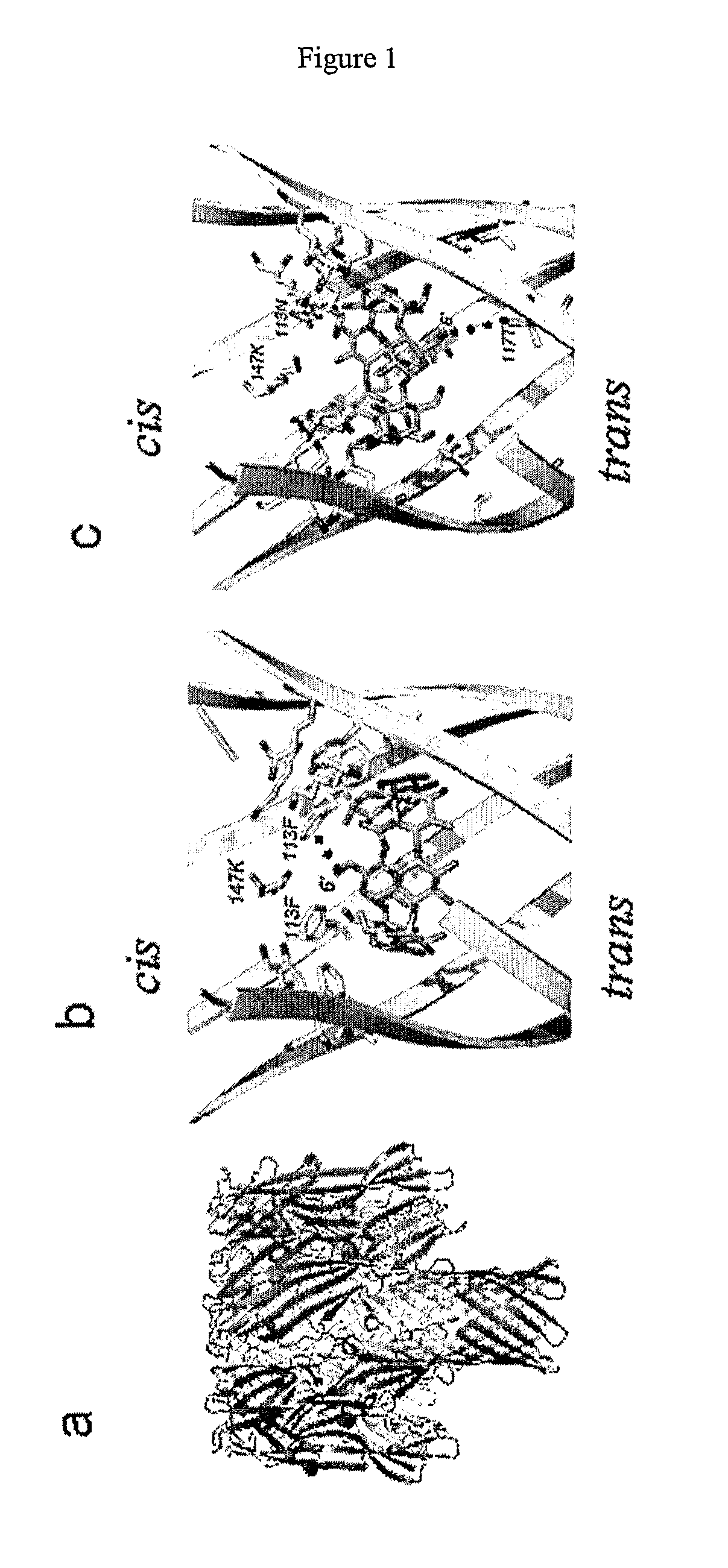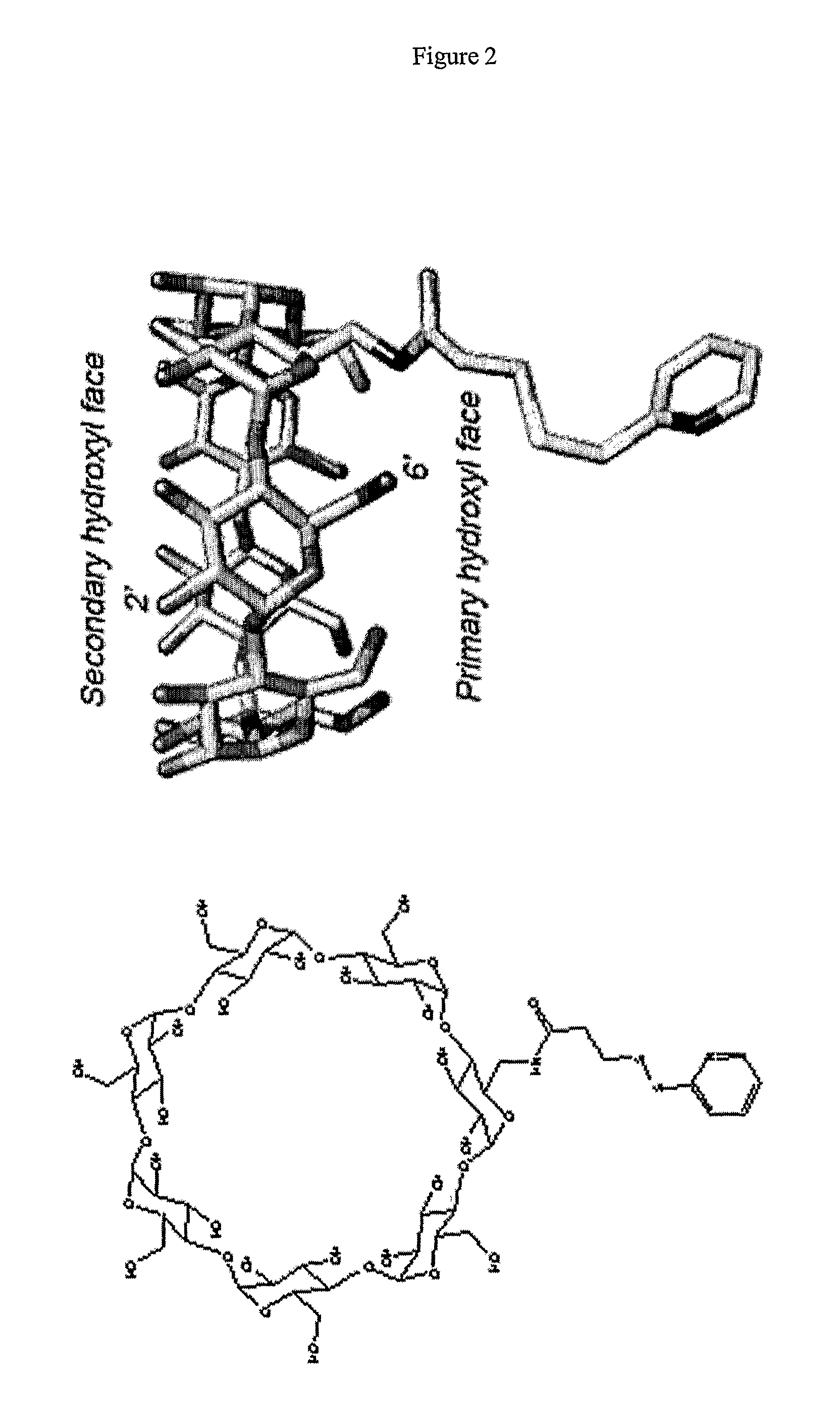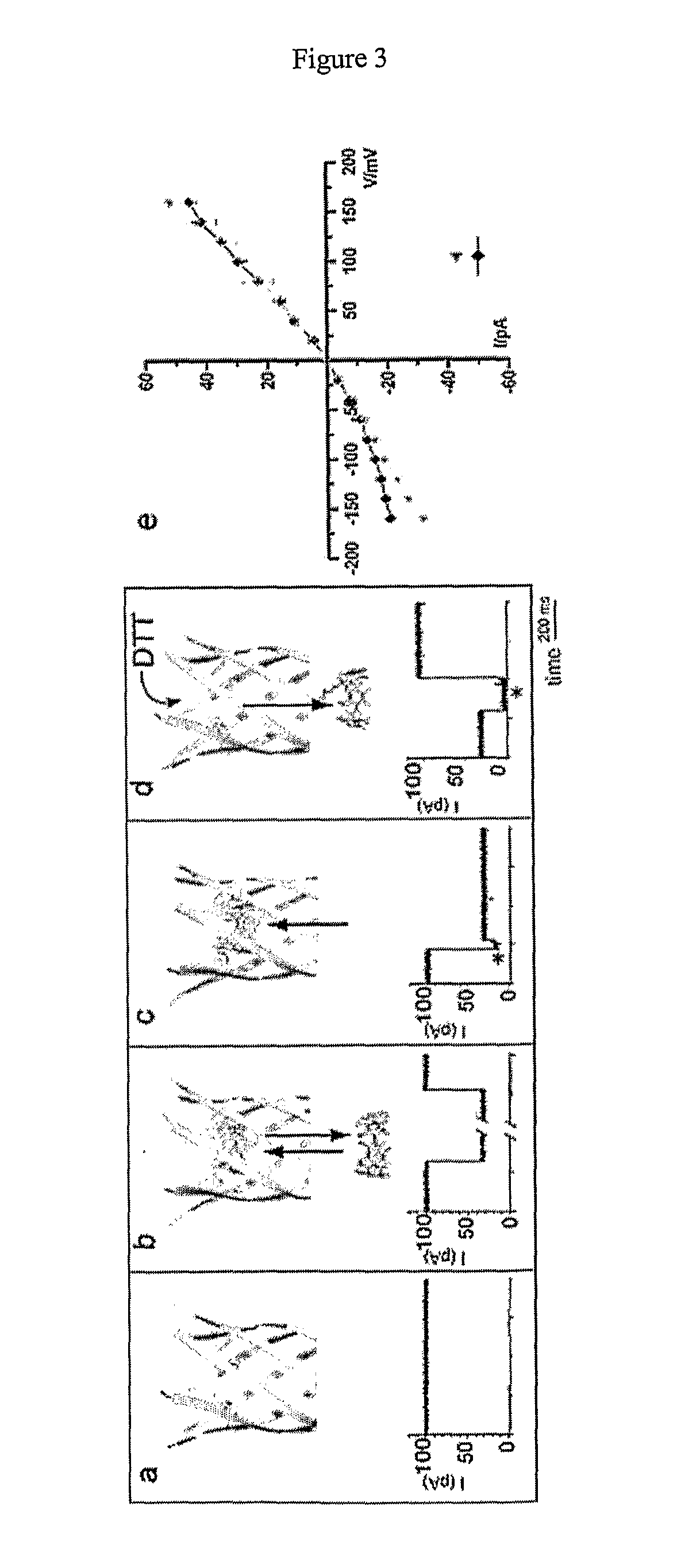Molecular adaptors
a technology of adaptors and molecules, applied in the field of transmembrane protein pores, can solve the problems of substantial but incomplete channel blockage, and achieve the effect of facilitating interaction
- Summary
- Abstract
- Description
- Claims
- Application Information
AI Technical Summary
Benefits of technology
Problems solved by technology
Method used
Image
Examples
example
[0176]In this Example, we covalently attach β-cyclodextrin (β-CD) to the αHL pore, using the mutations at position 113 to orient the adaptors for covalent bonding and stabilize them within the pore lumen after reaction. This approach has two important outcomes. First, the adaptor cannot dissociate from the nanopore. Second, the orientation of the cyclodextrin can be controlled with either the primary hydroxyls or the secondary hydroxyls facing the trans entrance of the pore.
PUM
| Property | Measurement | Unit |
|---|---|---|
| pH | aaaaa | aaaaa |
| pH | aaaaa | aaaaa |
| temperatures | aaaaa | aaaaa |
Abstract
Description
Claims
Application Information
 Login to View More
Login to View More - R&D
- Intellectual Property
- Life Sciences
- Materials
- Tech Scout
- Unparalleled Data Quality
- Higher Quality Content
- 60% Fewer Hallucinations
Browse by: Latest US Patents, China's latest patents, Technical Efficacy Thesaurus, Application Domain, Technology Topic, Popular Technical Reports.
© 2025 PatSnap. All rights reserved.Legal|Privacy policy|Modern Slavery Act Transparency Statement|Sitemap|About US| Contact US: help@patsnap.com



